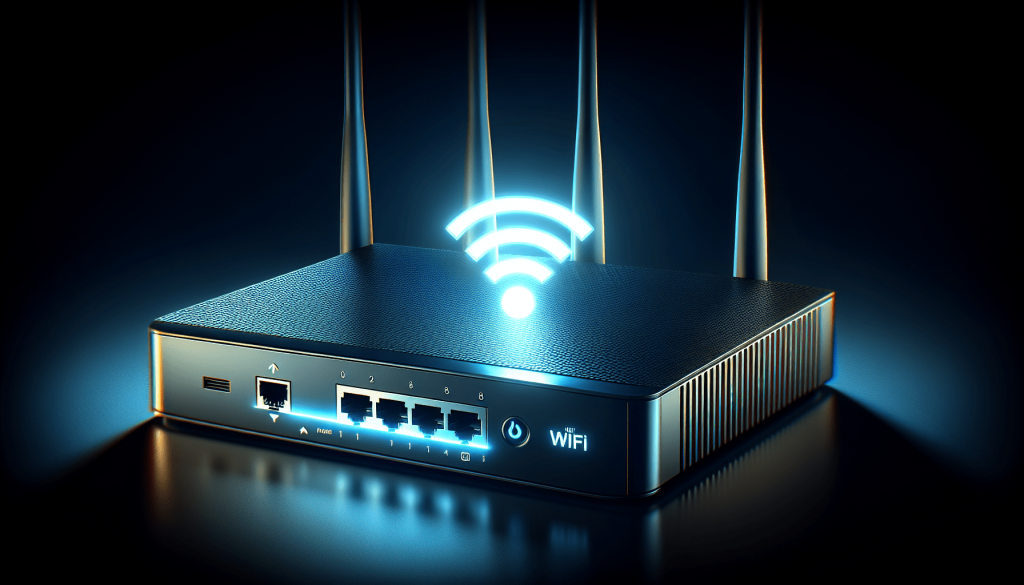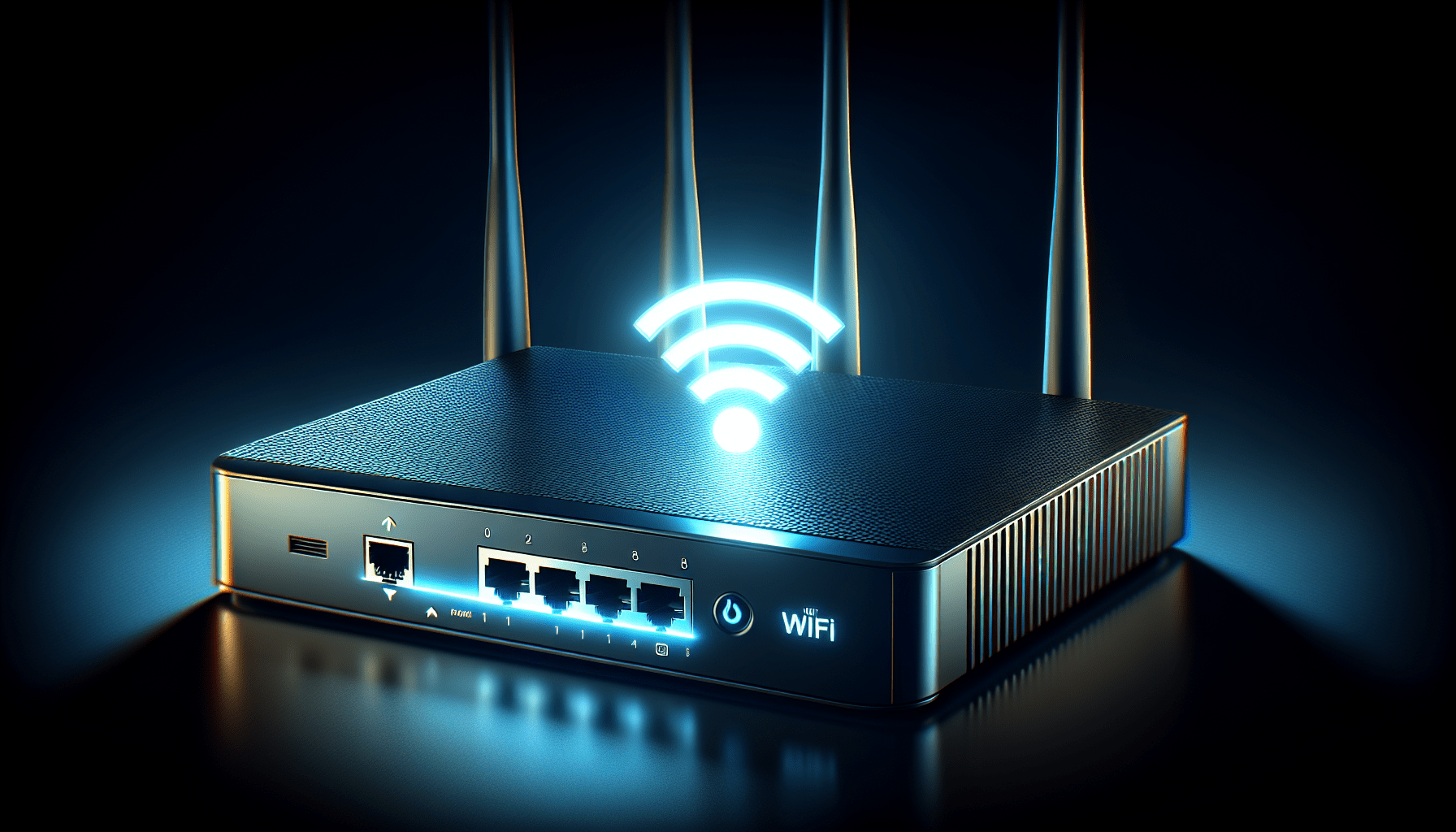Today, we’re going to show you how to set up a guest network on your router in just a few simple steps. Having a guest network is a great way to provide internet access to your visitors without compromising the security of your home network. Whether you frequently host friends and family or want to offer a separate connection for your smart devices, this step-by-step guide will help you create a dedicated network for your guests in no time. So, grab your router and let’s get started!

Determine the need for a guest network
Identify the reasons for setting up a guest network
Setting up a guest network can be a great way to provide internet access to your guests without compromising the security of your main network. It allows you to create a separate network specifically for your visitors, ensuring that their devices are isolated from your personal devices and data. By having a guest network, you can offer a convenient and secure way for your guests to connect to the internet without giving them access to your personal files, printers, or other devices on your main network.
Consider the benefits of having a separate network for guests
Having a separate guest network offers a range of benefits. Firstly, it helps protect your personal network from potential security threats that may arise from guests’ devices or activities. Guests may unknowingly bring malware or viruses with them, so keeping them on a separate network can help prevent the spread of such threats. Secondly, a guest network allows you to control and limit the access guests have to your network resources. You can choose to restrict their access to specific websites or limit their bandwidth usage to ensure that your network performance isn’t negatively affected. Finally, a guest network helps maintain your privacy. By keeping your guests’ devices separate from your main network, you can avoid accidental access to sensitive files or personal data.
Check if your router supports guest network functionality
Find the model number of your router
Before setting up a guest network, it’s important to check whether your router supports this functionality. To do so, you’ll need to find the model number of your router. The model number can usually be found on a sticker located on the bottom or back of the router.
Refer to the user manual or manufacturer’s website to check if it supports guest network
Once you have the model number, refer to the user manual that came with your router or visit the manufacturer’s website. Look for information regarding the router’s features and specifications to determine if it supports a guest network. If you’re unable to find this information, you can also reach out to your internet service provider or the router’s manufacturer for assistance.
Access your router’s configuration settings
Open a web browser on a device connected to your router’s network
To access your router’s configuration settings, make sure you have a device connected to the same network as your router. This can be a computer, laptop, tablet, or smartphone. Open a web browser on the device and make sure you are connected to the internet.
Type in the router’s IP address in the address bar and press Enter
To access the router’s configuration page, you’ll need to enter the router’s IP address in the address bar of your web browser. The IP address is a sequence of numbers separated by periods (e.g., 192.168.1.1). The specific IP address can vary depending on the router’s manufacturer and model. If you’re unsure what the IP address is, you can usually find it in the user manual or on the manufacturer’s website.
Log in to your router’s admin interface
Enter the username and password for your router’s admin account
To log in to your router’s admin interface, you’ll need to enter the username and password for your router’s admin account. These credentials are different from your Wi-Fi network’s password. If you’ve never changed the default login credentials, you can find them in the user manual or on the manufacturer’s website. Alternatively, you can contact your internet service provider for assistance.
If you don’t know the login credentials, check the user manual or contact your internet service provider
If you’re unable to find or remember the login credentials for your router’s admin account, refer to the user manual or get in touch with your internet service provider. They should be able to provide you with the necessary information or guide you through the process of resetting the login credentials.
Locate the guest network settings
Navigate through the router’s interface to find the guest network settings
Once you’ve logged in to your router’s admin interface, you’ll need to navigate through the interface to locate the guest network settings. The specific location and terminology may vary depending on your router’s model. Look for options such as “Guest Network,” “Wireless Settings,” or something similar.
Look for options like ‘Guest Network’ or ‘Wireless Settings’
In the guest network settings section, you should be able to find options related to enabling and configuring the guest network. These settings will allow you to customize and control how your guest network operates.
Enable the guest network
Toggle the switch or check the box to enable the guest network
Once you’ve located the guest network settings, you’ll typically find a switch or checkbox that allows you to enable or disable the guest network. Toggle the switch or check the box to enable the guest network functionality on your router.
Some routers may require you to configure additional settings such as network name (SSID) and password
Depending on your router, enabling the guest network may also require you to configure additional settings such as the network name (SSID) and password. The network name is what your guest network will be called, and the password is what guests will need to enter to connect to the network. Choose a network name and password that are easy to remember but difficult for others to guess.
Set up security measures for the guest network
Choose the appropriate security mode for the guest network
When setting up a guest network, it’s essential to consider the security measures you want to put in place. Choose the appropriate security mode for the guest network based on your needs and preferences. The most common options are WPA2-PSK (AES) or WPA3-PSK (AES), which provide strong encryption for securing your guest network.
Consider enabling features like network isolation and bandwidth control
To enhance the security and control of your guest network, consider enabling additional features such as network isolation and bandwidth control. Network isolation ensures that devices connected to the guest network cannot communicate with each other, preventing potential unauthorized access or data breaches. Bandwidth control allows you to limit the amount of bandwidth that guests can use, ensuring a fair and optimal networking experience for all users.
Configure additional settings for the guest network
Customize the network name (SSID) to make it easily identifiable
To make it easy for guests to identify your guest network, customize the network name (SSID). Avoid using personal or identifiable information in the network name, as this may compromise your privacy or make it easier for others to guess your password.
Define a strong password for the guest network
Choose a strong password for your guest network to prevent unauthorized access. A strong password typically includes a combination of uppercase and lowercase letters, numbers, and special characters. Make sure to avoid common or easily guessable passwords.
Connect devices to the guest network
Instruct guests to connect to the guest network
Once you’ve set up and configured your guest network, instruct your guests to connect to it when they arrive. Let them know the network name (SSID) and the password so that they can easily connect their devices.
Share the network name (SSID) and password with them
Make it convenient for your guests by sharing the network name (SSID) and password with them. You can provide this information in various ways, such as verbally mentioning it, writing it down on a note, or even creating a small sign or information card for easy reference.
Test the guest network
Connect a device to the guest network and check if it can access the internet
Before your guests arrive, it’s a good idea to test the guest network yourself. Connect a device (such as a smartphone or laptop) to the guest network and ensure that it can access the internet without any issues. Open a web browser and try visiting different websites to verify the connectivity.
Ensure that the guest network is separate from your main network and guests cannot access your personal devices
During the testing phase, it’s crucial to ensure that the guest network is properly isolated from your main network. Check that guests connected to the guest network cannot access your personal devices or resources. This ensures the security and privacy of both your guests and your own network.
Setting up a guest network on your router can greatly improve your home or office network security while allowing your guests to enjoy a reliable and convenient internet connection. By following these step-by-step instructions, you can easily create and customize a guest network that suits your specific needs. Enjoy the peace of mind knowing that your guests can comfortably browse the web while keeping your personal network and devices safe and secure.
